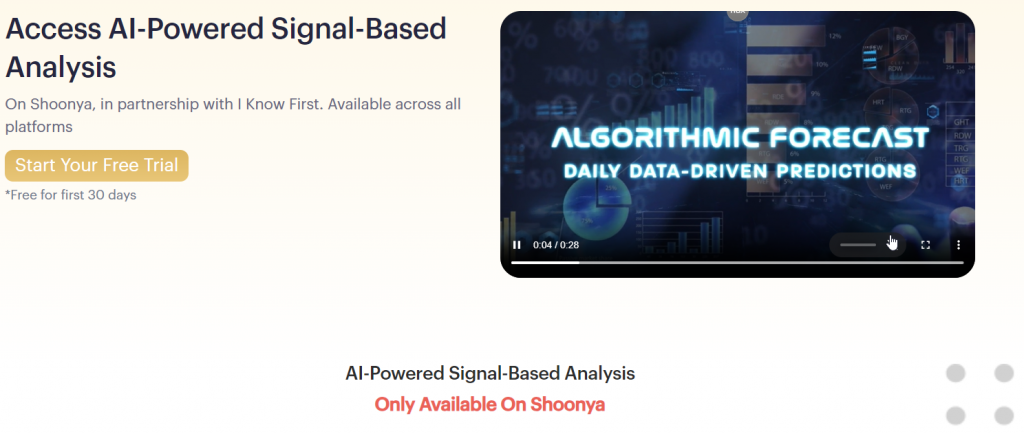20 Excellent Ideas For Choosing Ai Stock Price Prediction Websites
20 Excellent Ideas For Choosing Ai Stock Price Prediction Websites
Blog Article
Top 10 Tips For Evaluating The Cost And Pricing For Ai Stock Predicting/Analyzing Platforms
It is important to assess the cost and pricing of AI trading platforms that forecast or analyze stock prices. This will allow you to keep out any costs that are not obvious. Knowing what you pay for and how the pricing structure may be quite different. This can help you make an informed decision. Here are the top ten tips for evaluating cost and pricing:
1. Understanding Pricing Model
Subscription: Be sure to check if a platform charges a fee per month or year and what's included in each stage.
Pay-per - use: Verify the charges of the platform are based on usage, for example, the number of trades (or data requests) or predictions.
Freemium model: Check whether it is an initial free version with limitations in functionality, and charges for premium functions.
2. Compare Pricing Tiers
Compare features across each pricing level (e.g. basic, professional).
Scalability: Ensure that the pricing levels align with your needs, whether you are an individual trader or professional.
Upgrade flexibility - Check to see if there's any easy ways to upgrade or downgrade it if your requirements alter.
3. Evaluate Hidden Costs
Fees for data. Check if the platform is charging a fee to access premium data.
Brokerage costs Check to see whether the platform charges additional charges to conduct trades or connect with brokers.
API usage - Assess whether there are any additional costs that come with API access or high-frequency usage.
4. Try out demos for free and trial versions
Trial period: Look for platforms that provide a free trial or demo so that you can test their features before committing.
Limitations of the trial: Check if the trial includes all features, or if there are limitations on the functionality.
No-commitment option: Make sure you're able to end the trial at any time should it not suit your needs.
5. Look for promotions and discounts.
Discounts for annual subscriptions: Find out whether your platform provides discounts on subscriptions that are payable annually as opposed with plans paid monthly.
Referral programs. Find out if the platform provides discounts or credits for referring users.
Institutional pricing If you're part a larger organization, inquire about bulk or institutional pricing.
6. Calculate the Return on the investment
Cost vs. Value: Decide if the features and predictions of the platform justify the cost. It could help you save money and improve your trading strategies.
Record of performance: Check the platform's performance rate or user reviews to assess the potential return on investment.
Costs of alternative: Compare the platform's cost with the cost of not using the platform (e.g. missed opportunities, time spent manual analysis).
Review Cancellation Policies
You can end your subscription at any point without incurring penalties or fees.
Refund Policy: Check whether your subscription allows you to get a refund if any of the subscriptions are not being used.
Auto-renewal Check to determine whether your subscription renews automatically and learn how you can choose to stop it.
8. Examine Pricing Transparency
Clear pricing: Ensure that the platform's pricing is clearly stated and contains no hidden costs.
Customer support: Call customer service to clarify any pricing issues or costs.
Contract Terms: Learn about the long-term obligations and penalties by reading the contract's clauses.
9. Compare your competitors
Comparison of features: Compare the pricing and features of the platform to the competition to ensure that you're getting the best deal.
User reviews: Read user feedback and check if other users think this platform is worth it.
Check the market positioning of the platform. Does it meet your expectations?
10. Calculate the Long-Term Costs
Price rises: Find out if and how often the platform raises its prices.
Features that are added: Find out if your current plan includes new features or requires an upgrade.
Cost for scaling: The platform should be priced in a reasonable way when your trading activities or data requirements grow.
Bonus Tips
Try out multiple platforms. Test them all in a trial for free to see how they perform.
Negotiate the price: If you are frequent users or part of a large organization You can inquire about discounts or special pricing.
There are numerous platforms that provide educational resources and tools no cost.
Follow these tips to assess the cost and pricing for AI platform for analyzing and predicting stocks. Choose one that meets your needs and fits within your budget. A reputable platform will provide the right balance between affordability and functionality, helping you achieve the best results from your trading. Check out the top ai investment platform info for website tips including trading ai bot, ai investment app, ai copyright trading bot, ai stock trading, ai stock trading, ai for investing, best ai for trading, ai investment app, best stock analysis app, canadian ai stocks and more.
Top 10 Tips For Evaluating The Scalability Of Ai Analysis And Stock Prediction Platforms
It is important to assess the performance and scalability of AI-driven stock prediction and trading platforms. This will help ensure that they can cope with the increasing volume of data, market complexity, and user demands. Here are the top 10 ways to assess scalability.
1. Evaluate Data Handling Capacity
Tips: Make sure the platform can process and analyze large datasets (e.g., historic stock data, real-time market feeds, and alternative data like news or social media).
Why: Scalable platform must be capable of handling the ever-growing data volume without performance degradation.
2. Test the Real-Time Processing Capabilities of your processor
Tips: Check how the platform processes live data streams, like live stock prices, or breaking news.
Why: Delays in trading decisions could lead to missed opportunities.
3. Cloud Infrastructure and Elasticity Cloud Infrastructure and Elasticity: Take a look
Tips. Determine whether the platform is using cloud-based infrastructure, such as AWS, Google Cloud and Azure which are able to scale resources on demand.
Why: Cloud platform elasticity allows the size of the system to adapt based on usage.
4. Algorithm Efficiency
Tips: Evaluate the computational power (e.g. deep learning, reinforcement-learning) of the AI models used for prediction.
Reason: Complex algorithms can be resource intensive, so optimizing these algorithms is vital to scalability.
5. Examine the parallel Processing and Distributed Computing
Check whether the platform utilizes parallel computing or distributed computing frameworks.
Why: These technologies enable faster data processing and analysis over a variety of nodes.
6. Examine API Integration and Interoperability
TIP: Test the platform's ability to integrate with external APIs (e.g., brokerage APIs, market data providers APIs).
Why: Seamless Integration ensures that the platform can adapt easily to new information sources, trading environments, and other factors.
7. Analyze User Load Handling
You can simulate high user traffic and observe how the platform reacts.
What's the reason? The performance of a scalable platform should not be affected by the rise of users.
8. Assess the model of Retraining and its adaptability
Tip: Assess how frequently and efficiently AI models are being retrained using new data.
Why? Models have to constantly change to keep up with the ever-changing market in order to remain accurate.
9. Examine for fault tolerance and redundancy.
Tip: Ensure the platform has failover mechanism and redundancy to handle hardware or software issues.
The reason Trading is expensive, so the ability to handle faults and scale are essential.
10. Monitor Cost Efficiency
TIP: Take into consideration the cost of scaling your platform. Take into account cloud resources such as storage of data as well as computing power.
Why: Scalability should not be a burden that is unsustainable So balancing performance and expense is critical.
Bonus Tip: Future-proofing
Make sure the platform can be able to adapt to changes in regulation and incorporates the latest technologies, such as quantum computing, or even advanced NLP.
By focusing your attention on these elements, you can accurately assess the scalability AI prediction as well as trading platforms. This will ensure that they are robust and effective, and also ready for further growth. Have a look at the top ai investing app info for website advice including ai trade, stock ai, copyright financial advisor, trading with ai, best ai etf, canadian ai stocks, ai stock picks, ai stock picks, ai trade, stock market software and more.